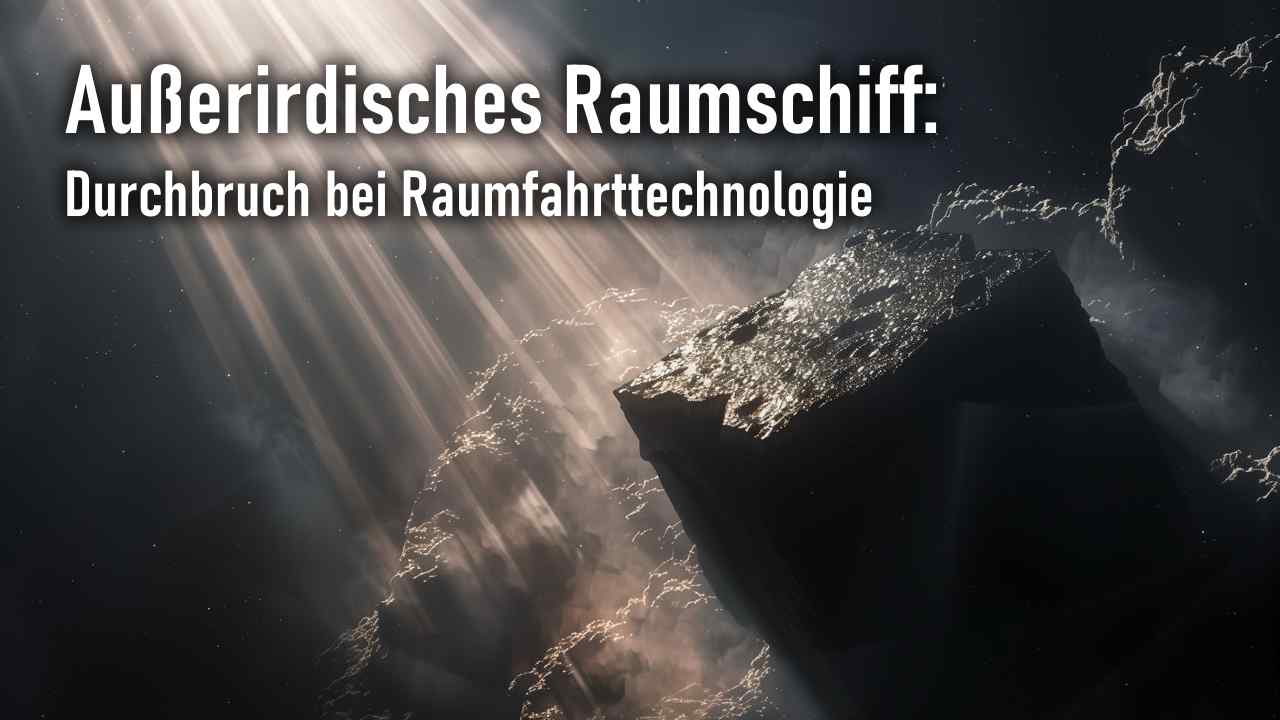
2307 Raumschiffantrieb durch Manipulation der Raumzeitmetrik

Man hatte schon vorher erfolgreich von außen die Raumzeit künstlich deformiert. Aber nun gelingt dies erstmals von innerhalb der Blase. Die Versuchsapparatur verdichtet die Raumzeit in einer Richtung und expandiert sie in der anderen. Damit entsteht eine scheinbare Bewegung ohne, dass sich das Objekt im Raum bewegt. Es ist der Raum selbst, der sich bewegt.
Der Raum wird aber nicht makroskopisch deformiert. Man benutzt fraktale Raumverzerrungen, die hohe Gravitationsgradienten an einem Geflecht infinitesimaler Faltflächen erzeugen. Die Faltflächen haben eine fraktale Dimension nahe 3. Sie sind raumartig, haben aber theoretisch kein Volumen, in dem die Raumzeit gekrümmt werden muss. In der Praxis sind die fraktalen Faltflächen nicht streng zweidimensional. Aber das reale Gesamtvolumen ist so gering, dass man bei Weitem nicht so viel exotische Materie braucht, wie früher angenommen. Die negative Energie virtueller Teilchen an einem künstlichen Ereignishorizont liefert auf sub-nuklearen Längenskalen die nötigen Gravitationsgradienten. Der Ereignishorizont für virtuelle Teilchen entsteht durch einen Quantenspiegel, der die CP-Verletzung benutzt, um D-Mesonen und ihre Antiteilchen zu trennen.
Der messbare Effekt ist noch gering. Die scheinbare Bewegung beträgt nur wenige Mikrometer pro Sekunde. Aber noch nie zuvor hat sich ein von Menschen geschaffenes Gerät durch Krümmung des Raums selbst bewegt.
Viele Forschungsgruppen arbeiten an Verbesserungen. Schnell erreicht man scheinbare Geschwindigkeiten von einigen Metern pro Sekunde. Im Lauf der Zeit werden viele Parameter optimiert. Manche Mechanismen werden verbessert, andere durch leistungsfähigere Alternativen ersetzt.
Die tatsächliche Größe der Faltflächen spielt eine wichtige Rolle. Je höher die fraktale Dimension, desto feiner sind die Faltflächen und desto größer der erreichbare Gravitationsgradient und die Geschwindigkeit.
Der Antrieb läuft gepulst. Jeder Puls erzeugt eine kleine Raumverschiebung. Die scheinbare Geschwindigkeit ist deshalb proportional zur Taktfrequenz. Die Zykluszeit sinkt bald von Millisekunden auf Nanosekunden. Dafür stellt man die aktive Zyklussteuerung auf einen Resonanzeffekt um. Das ist ein Paradigmenwechsel, für den viele andere Komponenten angepasst werden müssen.
Später ersetzt man D-Mesonen durch B-Mesonen wegen ihrer höheren Masse. Das erhöht den Energiebedarf, aber auch die Geschwindigkeit bis in den Bereich von Kilometern pro Sekunde.
Statt eines CP-basierten Quantenspiegels werden noch später Quantum Black Holes als Ereignishorizont benutzt. Damit öffnet sich die Möglichkeit, Weakly Interacting Massive Particles (WIMPs) oder Bose-Einstein Kondensate, statt einzelnen Mesonenpaaren zu verwenden. Deren Erzeugung in relevanten Mengen liegt aber noch weit in der Zukunft. Auch Pikosekunden-Takte werden erst mit extrasolarer Technik möglich.
Jede Verbesserung bringt einen Effizienzgewinn, eine höhere Geschwindigkeit, einen geringeren Energieverbrauch, höhere Zuverlässigkeit oder Manövrierfähigkeit. Echte Überlichttriebwerke in interstellaren Raumschiffen werden fast nichts mehr gemeinsam haben mit den ersten Versuchsapparaturen. Aber das Grundprinzip bleibt bis in das Überlichtzeitalter gleich.
2312 Entdeckung des Kaio-Artefakts

Die Prospektorin Katana Aiko-Io macht eine Entdeckung, die den Lauf der Geschichte verändert. Aiko-Io wurde im Marsorbit geboren und wanderte später nach Ganymed aus. Von dort aus arbeitet sie als selbständige Prospektorin in den Jupiter-Trojanern.
Aiko-Io steuert einen Schwarm von Bergbaudrohnen, als sie plötzlich das Transpondersignal eines anderen Schiffes aus nur 15 Millionen Kilometern Entfernung empfängt. Das fremde Schiff gibt sich als Bergbaudrohnentender von Serenity Haven zu erkennen. Serenity hatte kürzlich einen vorläufigen Souveränitätsanspruch (vSA) für Teile der führenden Jupiter-Trojaner geltend gemacht. Andererseits wird Aiko-Ios Erkundung aber durch eine umfangreiche sogenannte entfernte exklusive Wirtschaftszone (eeWZ) des Ganymed-Direktorats gedeckt deren Raum sich teilweise mit Serenitys Anspruch überschneidet. Aber ihr ist bewusst, dass das Direktorat in der weitläufigen Region der inneren-mittleren führenden Jupiter-Trojaner, den sogenannten "Griechen", nur symbolisch präsent ist, während Serenity eine Basis zur Rohstoffveredelung und mehrere Drohnentender betreibt. Deshalb verlegt sie Mitte 2312 ihren Operationsbereich in einen benachbarten unbeanspruchten Teil der Trojaner.
Obwohl sich Aiko-Io dann weder in der Direktorats-eeWZ noch im Serenity-vSA befindet, versucht sie weiterhin unentdeckt zu bleiben, um Schwierigkeiten aus dem Weg zu gehen. Sie führt ihre Erkundung im Graubereich durch, ohne ihre Identifikation zu senden. Sie bleibt meistens in der Nähe von größeren Himmelskörpern und für längere Strecken legt sie den Kurs so, dass sich meistens Asteroiden zwischen ihr und den bekannten Positionen der Konkurrenz befinden. Und selbst wenn sie ab und zu mal als Blip irgendwo auftaucht, dann interessiert sich normalerweise niemand dafür, denn im Gürtel sind alle mit ihren eigenen Operationen beschäftigt und kümmern sich nicht um sporadische Sensorkontakte in zig- Millionen Kilometer Entfernung.
Trotzdem empfängt sie irgendwann die Identifikationsfernabfrage einer Grenzboje des Serenity vSAs. Das Serenity Grenzüberwachungsnetzwerk hat sie offensichtlich geortet und das fehlende Transpondersignal festgestellt. Ohne Transponder zu fliegen ist nach dem Koalitionsvertrag von 2302 illegal, und die nächste Volumen- oder Territorialsouveränität ist verpflichtet, den Fall strafrechtlich zu verfolgen. Allerdings ist die Zuständigkeit von Serenity zweifelhaft, denn der Souveränitätsanspruch ist nur selbsterklärt und vorläufig. Außerdem sind diese Bojen letztlich nur kleine Cubesats ohne eigene Durchsetzungsmöglichkeiten. Die Boje kann das Ereignis also nur weitermelden und der nächste Drohnentender von Serenity mit paramilitärischen Kapazitäten ist dutzende Millionen Kilometer entfernt. Dennoch entscheidet sich Aiko-Io, nicht auf die Identifikationsanfrage zu reagieren, sondern "abzutauchen".
Sie lässt ihre Erkundungsdrohnen nach einem Versteck im Schatten ihres aktuellen Trümmerhaufen-Asteroiden suchen. Der Kontaktbinär-Asteroid mit seinen Klippen und Ausbuchtungen eignet sich perfekt dafür. Mithilfe selektiver PHIDAR-Technologie (Phased Array LIDAR) finden ihre Drohnen eine besonders dunkle Höhle. Dabei zeigt Aiko-Ios NID (ihr Neuro-Implant-Display) für einen kurzen Augenblick eine seltsame Form am Asteroiden. Neugierig und auf der Suche nach einem guten Versteck, steuert sie ihr Schiff näher – und findet ein außerirdisches Raumschiff.
Das Schiff ist ziemlich groß, auch für die Verhältnisse einer modernen interplanetaren Zivilisation; ein 100 Meter Würfel mit etwa 300.000 Tonnen Masse, doppelt so groß wie die größten Flugzeugträger des 21. Jahrhunderts. Das Schiff ist von einem ortsüblichen Trümmergemisch bedeckt: Felsen, Kiesel und Staub. Seine auffallend dunkle, breitband-absorbierende Hülle ist nur im fernen Infrarot sichtbar. Und selbst im Wärmebild ist das Schiff kaum zu erkennen, da es die gleiche Temperatur hat wie der Asteroid. Trotzdem wirft die Entdeckung Fragen auf: Wie konnte das Exo-Schiff den Prospektordrohnen entgehen, die in den vergangenen 150 Jahren mehrfach alle Asteroiden im Gürtel und alle großen Trojaner kartographiert haben?
Die Nachricht vom Fund des außerirdischen Schiffs verbreitet sich wie ein Lauffeuer durch das Sonnensystem. Das Schiff ist mindestens 30.000 Jahre alt und damit das jüngste bekannte außerirdische Artefakt. Die Presse kürzt den Namen der Entdeckerin – K. A. Io – ab und tauft das Schiff auf den Namen "Kaio-Schiff". Die antiexpansionistische Regierung der Erdunion verhängt eine strikte Nachrichtensperre. Durch den Einsatz fortschrittlicher Überwachungs- und Filtertechniken verhindert sie, dass die Nachricht die Erdbevölkerung erreicht. Die Union zeigt bei dieser Gelegenheit, dass sie in den Netzwerken der Erde sogar Ende-zu-Ende-verschlüsselte private Kommunikation manipulieren kann.
Die interplanetare Wissenschaftsgemeinschaft ist von der Entdeckung ebenso fasziniert wie überwältigt. Viele Technologien des Schiffes basieren auf unbekannten physikalischen Prinzipien. Der schlechte Zustand des Schiffes und die unbekannten Informationsstrukturen erschweren die Forschung. Das Schiff hat eine fraktal strukturierte Hülle, die nahtlos in den Rahmen übergeht. Eine genaue Untersuchung zeigt integrierte nanotechnische Selbstheilungsmechanismen, die wohl aufgrund von Energiemangel nicht aktiv sind. Der Reaktorkern ist kalt und strahlt nicht. Er zeigt nicht einmal eine signifikante Reststrahlung, die man auch 30.000 Jahre nach dem Betrieb irdischer Fusionsreaktoren noch gut messen könnte. Die Informationstechnologie des Alienschiffs wirkt im Vergleich zu seinen anderen fortschrittlichen Technologien eher primitiv. Das macht zumindest die technologischen Prinzipien der Informationsspeicherung nachvollziehbar.
Anfangs erhebt das Ganymed-Direktorat Anspruch auf das Schiff und leitet die ersten Forschungen. Aber viele andere interplanetare Mächte, die fürchten, neue wissenschaftliche Erkenntnisse zu verpassen, üben Druck auf das Direktorat aus. Nach drei Jahren übernimmt die Solare Koalition die Koordination. Die Koalition initiiert ein systemweites Forschungs- und Erkundungsprojekt unter Beteiligung der klügsten Köpfe und modernsten Inferenzmaschinen des Sonnensystems. Die Koalition stellt sicher, dass das gewonnene Wissen der gesamten Menschheit zugänglich ist – mit Ausnahme der Erdbevölkerung, die aufgrund der Informationssperre ahnungslos bleibt. Die Erforschung des fremden Raumschiffs ist das erste große Projekt der noch jungen Solaren Koalition, die sich damit als bedeutender interplanetarer Akteur etabliert.
In den folgenden dreißig Jahren versuchen tausende Wissenschaftler, Informatiker, Kryptologen, Xenologen, Physiker und Ingenieure, das Informationssystem des fremden Raumschiffs zu entschlüsseln. Schließlich gelingt es, die Speicherbänke des Schiffs zu lesen. Damit bekommt die Menschheit einen ersten Einblick in die lokale interstellare Umgebung – auch wenn die Informationen schon 30.000 Jahre alt sind. Den Wissenschaftlern gelingt es zwar nie, das Informationssystem zu starten, aber sie können Speicherbänke scannen, in denen man Backups vermutet. Dabei identifizieren und extrahieren sie hierarchisch organisierte 3D-Bilder von technischen Geräten, von Sternenkarten und von fremden Planeten. Die gefundenen Daten enthalten außerdem Aufzeichnungen über interstellare Reiserouten und Informationen über außerirdische Zivilisationen.
Nach ausführlichen Untersuchungen zeigt sich der wahre Schatz des Schiffes: Seine Hülle weist Strukturen auf, die der solaren Raummodulationstechnik ähneln. Diese Entdeckung führt die Forscher zu der bahnbrechenden Erkenntnis, dass das Schiff über einen integrierten Überlichtantrieb verfügen könnte. Die Analyse der Hülle löst einen Paradigmenwechsel in der Raumfahrttechnologie aus. Im Gegensatz zum bisher verfolgten Ansatz komprimiert und dehnt dieser Antrieb den Raum nicht in Reiserichtung. Stattdessen manipuliert er den Raum orthogonal zur Flugbahn, damit das Schiff seine eigene Raumblase zwischen die umgebende Raumzeit schieben kann.
Die Entdeckung liefert praktische Einblicke in fortschrittliche Techniken zur Manipulation der Raumzeit. Sie revolutioniert das bisherige Konzept metrischer Antriebe und eröffnet völlig neue Möglichkeiten für die interstellare Raumfahrt. Die Erkenntnisse aus dem Kaio-Artefakt führen zu einer Neuausrichtung der Raummodulationsforschung. Dies beschleunigt die Entwicklung von Überlichtantriebssystemen im Solsystem. Rückblickend betrachtet, steuerte die damalige metrische Wissenschaft auf eine Sackgasse zu. Die Erforschung des Kaio-Schiffes weist jetzt einen Weg zu neuen technologischen Ansätzen. Dadurch verkürzt sich die Zeit bis zum ersten echten metrischen Antrieb der Menschheit drastisch.
Dieses Ereignis gilt als Wendepunkt, als der Beginn des interstellaren Zeitalters der Menschheit. Trotzdem ändert sich im Alltag zunächst wenig. Zwar herrscht große Aufregung – sowohl anfänglich als auch in den folgenden Jahrzehnten, immer wenn neue Entdeckungen veröffentlicht werden. Doch der Alltag in der interplanetaren Zivilisation bleibt unverändert. Auf der Erde bedeutet die Informationsblockade, dass die Erdbevölkerung von der Entwicklung gar nicht erst Kenntnis nimmt. Das Leben geht wie gewohnt weiter.
Es dauert nur ein halbes Jahrhundert bis die ersten Schiffe mit noch relativ langsamen und schwerfälligen, aber rückstoßfreien Antrieben zum Einsatz kommen.
Die Menschheit erhält also Zugang zu Exo-Technologien, die so fortschrittlich sind, dass sie nicht untersucht werden können – mit Ausnahme der Informationsspeicherung und der Raummanipulation. Die Kluft zwischen dem solaren Technologieniveau und dem des fremden Schiffs ist in bestimmten Bereichen gerade noch überbrückbar, während andere praktisch unzugänglich bleiben.
Der neue Anstoß in der metrischen Technologie kommt genau zum richtigen Zeitpunkt, wenige Jahre nachdem Wissenschaftler erfolgreich den Prototyp eines metrischen Antriebs demonstriert hatten. Diese Wissenschaftler verfügen nun über genau das richtige Wissen, um von der außerirdischen Technologie zu lernen. Und gerade als die metrische Forschung der Menschheit in die falsche Richtung zu gehen droht, lenken die Erkenntnisse aus der Raummodulationsausrüstung des Alienschiffs die metrische Wissenschaft wieder auf den richtigen Kurs. So wird eine technologische Sackgasse vermieden und der Zugang der Menschheit zur Überlichtgeschwindigkeit wesentlich verkürzt. Das Timing passt erstaunlich gut.
Darüber hinaus scheint die Speichertechnologie weniger fortschrittlich zu sein als andere Bereiche. Zumindest einige der Datenbänke sind auf einem technischen Niveau, das physisches Scannen und rudimentäre Informationsextraktion ermöglicht. Die gewonnenen Daten enthalten den Standort einer nahen Exo-Zivilisation. Wie man viel später – im Zeitalter der ersten interstellaren Reisen – herausfindet, sind diese Aliens bereit, mit Menschen zu handeln und gleichzeitig aber so anders, dass sie nicht versuchen, die Menschheit über den Tisch zu ziehen. Ein Problem, das der unerfahrenen Menschheit bei vielen interstellare Fraktionen begegnen wird – was man auch viel später herausfindet. Die Informationen bieten so ein einigermaßen leicht erreichbares und ungefährliches Ziel für die ersten Überlichtflüge der Menschheit.
Eine Besonderheit ist die unverschlüsselte Datenspeicherung des fremden Schiffs. Unverschlüsselte Daten gibt es in der solaren Technologie eigentlich nicht mehr. Man ging davon aus, dass alle technologischen Entwicklungen in Richtung Verschlüsselung gehen würden, da eine Kodierung sowieso nötig ist und Verschlüsselung als Kodierung sowohl kostengünstig als auch unüberwindbar ist. Offenbar ist das hier nicht der Fall.
Vor allem aber ist die Tatsache, dass das Schiff zuvor nicht entdeckt worden war, fast nicht zu erklären. Zwar war die Hülle als Seiteneffekt ihrer metrischen Funktion tatsächlich sehr schwer zu orten, aber das Schiff hätte spätestens vor einem halben Jahrhundert von Erkundungsdrohnen entdeckt werden müssen.
Zur Erklärung dieses Phänomens werden zahlreiche wissenschaftliche Theorien und mathematische Modelle entwickelt, aber auch Verschwörungstheorien entstehen. Einige argumentieren, dass dies keine bloßen Zufälle sind, sondern dass jemand versucht, die Menschheit auf einen beschleunigten interstellaren Weg zu bringen.
Andererseits könnte es sich auch einfach um ein 30.000 Jahre altes Wrack handeln, das vor 50 Jahren von ein paar fehlerhaften (oder einfach nur unaufmerksamen) Erkundungsdrohnen übersehen wurde.
Aber vielleicht gibt es tatsächlich Kräfte im Universum, die so fortgeschritten sind, dass sie eine perfekt glaubwürdige und für die Forensik des 24. Jahrhunderts einwandfreie Nachbildung mit genau den richtigen Eigenschaften herstellen und diese dann unauffällig platzieren können, um die Technologie der Menschheit voranzubringen.
Mehr Raumfahrt
2135 Sonnenschirm für die Erde
2154 Gemini
2155 Asteroiden-Mining
2158 Space Patrol
2179 Private Asteroidenbasis
2182 Ende des Venus-Terraformings
2187 Strafgefangene auf dem Mond
2199 Anschlag auf das Dubai-Kosmodrom
2222 Weltraumpiraten
2234 Am Ende des Orbits
2247 Quantensprung
2268 Raumpiraten
2307 Fraktale Antriebe
2333 Metrische Impulsverstärkung
2347 Interstellares Slowboat
2394 Sternenschwarm
2422 Jupiter-Saturn Schnellbahn
2430 Proxima Centauri
2458 Durchbruch
2466 Überlichtantrieb
2484 Flucht zu den Sternen
2497 Forschungsschiff zu den Aliens
2501 Extraplanetare Forschung
2523 Erste interstellare Siedler
2648 Abenteuerliche Reise
2747 Raumrennen
Neue Beiträge
2158 Space Patrol
2222 Weltraumpiraten
2326 Kein interplanetarer Krieg
3050 Königliche Garde
3090 Solo Ehre
2234 Am Ende des Orbits
2248 Gemini-Katastrophe
2366 Orbitale Ökonomie
2312 Kaio-Artefakt
3361 Erste Menschheit
2333 Metrische Impulsverstärkung
2337 Verschwörung im Orbit
2247 Quantensprung
2284 Trennung der Erde
2321 Isolation der Erde
2205 Unternehmensnationen
2192 Antiexpansionistischer Terror
2179 Private Asteroidenbasis
2231 Vereinte Planeten
2291 Verbotene Forschung
Die Besten
(20 von 75)
2205 Unternehmensnationen
2222 Weltraumpiraten
2231 Vereinte Planeten
2291 Verbotene Forschung
2312 Kaio-Artefakt
2412 Pontos Mission
2574 Artu-Domäne
2725 Auch Maschinen haben ein Gewissen
2841 Leuchtender Tempel
2843 Gefährliche Bergung
3050 Königliche Garde
3090 Solo Ehre
3110 Zersplitterung des äußeren Systems
3116 Shackleton-Aufstand
3190 Überraschungsangriff
3225 Flux-Manifest
3245 Sterge-Blockade
3296 Drachenlegenden
3340 Strategische Initiative
3365 Quantensprung
 2305
Optimale Verhandlungsergebnisse
2305
Optimale Verhandlungsergebnisse

 2318
Erdunion
2318
Erdunion